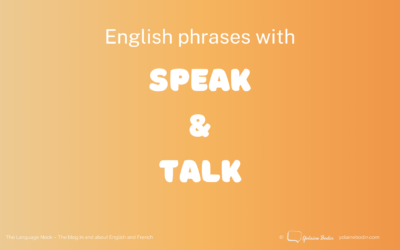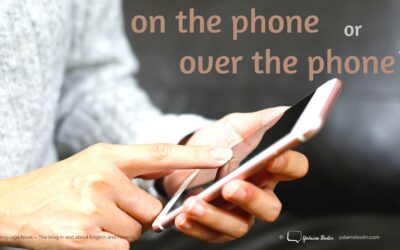As a learner of English as a foreign language, it is not always easy to choose between the three verbs see, watch and look (at).
It is usually well understood that there is a difference but it is not that easy to be sure which word should be used. These verbs are all the more easily confused depending on our mother tongue, mainly because some languages use the same verb for both look (at) and watch for example.
So, how can we tell the difference and when should we use see, watch or look (at)?
See is the English word to use when we want to talk about what image is captured by our eyes. It is not always intentional. Our eyes are open and see something. It is not necessarily a deliberate action.
- I woke up, opened my eyes, and saw it was a sunny day.
- Can you see her? She’s wearing blue jeans and a yellow t-shirt.
Look (at), unlike see, is intentional: we use look (at) when we are paying attention.
- Look at me and tell me the truth!
- We looked but couldn’t see anything at all.
- Look! They’re here!
Watch is also intentional, but is used when there’s an event, or something comparable to an event that is happening. It is used when we pay attention to something and focus on it:
- I watched television last night.
- They are watching a tennis match.
- She spent all afternoon in the garden watching the birds build a nest.
However, there are types of event where it is more common to use the verb see rather than watch. These are event like public performances:
- I went to see a play last month. You would have love it.
- Did you see the street show last weekend? It was really funny!
The question is actually where you are when you watch or see the performance in question. Films are a good example because that’s precisely where the confusion is most common and where many agree that the English language can be quite perplexing! Let’s look at these two examples:
- I watched a film last night → this means I was at home, watching a film on televion or on my computer.
- I saw a film last night → this means I was out in a public place, i.e. at the cinema in this example.
Note that the verb see also has other meanings so it can be used in different ways. It can mean:
- understand → Do you see what I mean?
- think about → Oh, you want a day off? I’ll see and let you know.
- meet→ I’m seeing my boss at 10 am, I hope she’ll accept my request for a new assistant.
The verb look can be used on its own but we need to add the preposition at when it is followed by an object in the sentence. Compare:
- Look!
- Look at that!
- Look at this graph.
Look can also be used with other prepositions (look for, look after), but let’s leave this on the side for a future post in the Language Nook.
There you are! You now know the difference between the English verbs see, look (at) and watch! 🙂





Very good idea to clear up this common confusion. Thanks Yolaine!
You’re welcome! 🙂